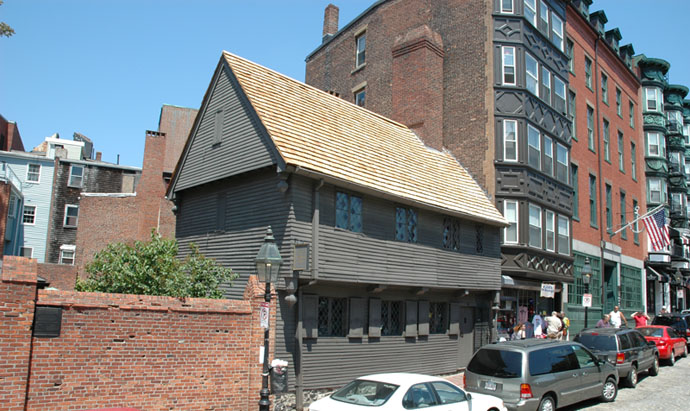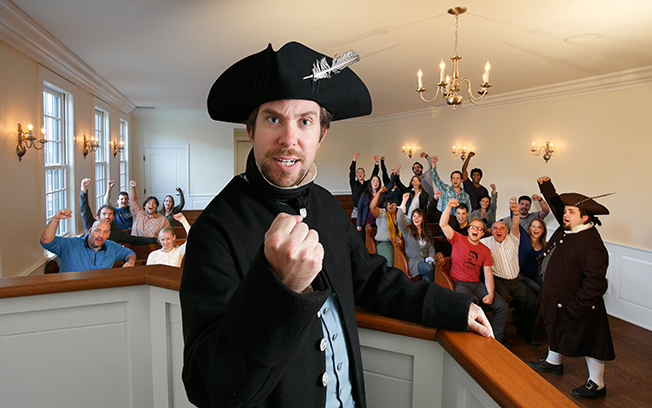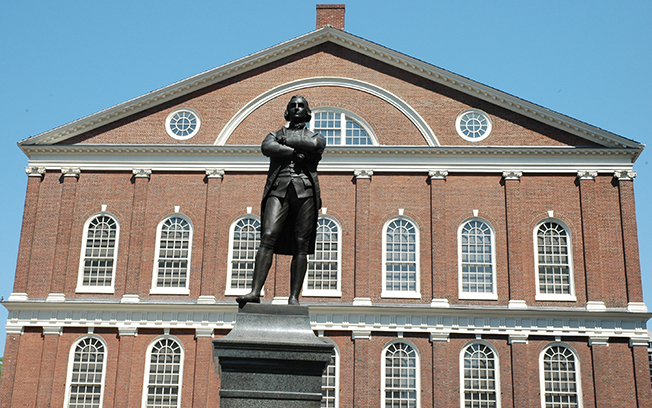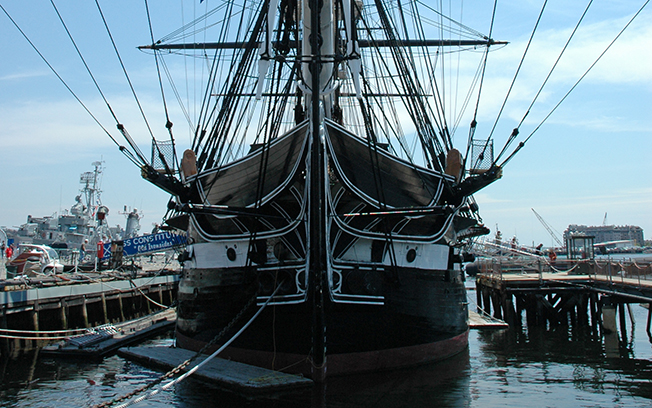Boston Historic Sites To Visit On Vacation
Perhaps one of the most historic cities in the United States, Boston offers a multitude of iconic sites that are significant to our country’s past. Millions of people from around the world visit the city each year to see where the beginning of our independence as a nation was born. Take a stroll through Boston to discover these historically significant sites!
Paul Revere House
Located within Boston’s oldest residential neighborhood, the North End, this historic home was built in 1680 and can be seen today along the Freedom Trail. It was home to Paul Revere and his family between 1770 and 1800. A visit here allows you to take a tour and learn about the home’s rich past, Paul Revere’s life and the true story of his famed midnight ride. Today as one of the most popular Boston attractions, the Revere house welcomes thousands of visitors per year.
Freedom Trail
This two and a half mile walk leads you to 16 different historical sites and is an excellent way to learn about our forefathers and the many people who helped make America what it is today. Sites along the trail are marked with a bricked or painted red line and include the Massachusetts State House, Park Street Church, Granary Burying Ground, King’s Chapel, the Site of the Boston Massacre and many more. You may join the very knowledgeable costumed guides from various points in the city or you may create your own self-guided tour.
Blackstone Block
A walk along Blackstone Block has you feeling as though you’ve stepped back in time. Dating back to the 18th century, this beautifully preserved piece of Boston includes the Capen House. Built in the early 1700’s, this edifice was later converted to the Union Oyster House restaurant, the oldest continuously-run restaurant in the country. In the past, this landmark also served as a silk importer’s shop and during the American Revolution it was where Isaiah Thomas printed the radical newspaper The Massachusetts Spy. Also along the Blackstone Block is the Ebenezer Hancock House that was built by John Hancock in the 1760’s. It’s here that Ebenezer, John’s brother, lived and served as the deputy paymaster of the Continental Army. History has it that there were 2.5 million silver crowns stored in this building to pay Washington’s troops. Be sure to look at the building to the left of the Ebenezer Hancock House, the Boston Stone is set there in the wall—a Boston landmark since 1734.
Old South Meeting House
Built in 1729, the Old South Meeting House holds a special place in American History. It was not only the place where Benjamin Franklin was baptized; it was also a Puritan Church that had such famous members as James Otis, Thomas Cushing and William Dawes. The Old South Meeting House is the place where the Boston Tea Party began. It was here that Samuel Adams, the Sons of Liberty and hundreds of angry colonists gathered to protest the unfair taxation of tea imposed by Britain. The patriots, led by Adams and his supporters, debated the issue for hours, then marched to Griffin’s Wharf where they proceeded to dump 342 chests of tea into the Boston Harbor. Today, you can see this house on the Freedom Trail, tour the interior, see the ongoing exhibit “Voices of Protest” and get a feel for the passion and dramatic events that took place here hundreds of years ago.
Boston Tea Party Ships and Museum
Located on the Congress Street Bridge, the Boston Tea Party Ships & Museum is the only place in the city where you can relive the events that took place on the night of December 16, 1773. Enter into a colonial town meeting where tempers fly and patriotism comes alive when the colonists are incensed to fight against unfair taxation. You’ll meet Samuel Adams and the Sons of Liberty face-to-face as they take you along on the fateful night of the Boston Tea Party. March to “Griffin’s Wharf” and throw tea overboard on an authentically restored tea ship 18th century sailing vessel. Witness history coming to life in striking, multi-sensory displays, interactive exhibits and holographic technology. And see one of only two surviving tea chests. The Boston Tea Party Ships and Museum takes you on a journey back in time more than 200 years and allows you to be a part of the “single most important event leading up to American Revolution.”
Bunker Hill Monument
An imposing sight along the Freedom Trail, the Bunker Hill Monument was built in 1842 to commemorate the famous Battle of Bunker Hill that took place on June 17, 1775. It was on this day that the legendary order “Don’t fire until you see the whites of their eyes!” was given when the American colonists faced thousands of British soldiers on Breed’s Hill. It was the first major battle of the American Revolution and the colonial troops were less experienced and ill equipped compared to the powerful and highly trained British Army. Hundreds of lives were lost on both sides and today this monument serves as a tribute to all of them. Amongst those lost that day were several British officers, and a leader of the Patriot cause, Dr. Joseph Warren. Standing 221-feet high, the Bunker Hill Monument sits in the center of Monument Square on Breed’s Hill and is truly a sight to behold.
Faneuil Hall
Built in 1742, Faneuil Hall has been the site of many public meetings throughout its history. It was here that Samuel Adams gave an emotional speech the morning after the Boston Massacre on March 5, 1770. Many other important citizens also used the hall as a gathering place to voice their opinions and garner support against oppression. Faneuil, a wealthy merchant, paid for construction of the building which is located at the site of the old town dock and features the renowned gilded grasshopper that’s perched upon its cupola. Today you can tour the building, learn all about this important structure and shop and dine in the festival marketplace that includes the North Market, Quincy Market and South Market. You can also see this landmark along the Freedom Trail walking tour.
Boston Common
The oldest park in America, Boston Common was established in 1634. Its rich history is filled with diversity including serving as campgrounds for the British troops before the revolution, hosting public protests, gatherings and recreation. It served as a speaking venue for famed celebrities including Martin Luther King Jr., Pope John Paul II and Gloria Steinem and is where Judy Garland performed for her largest crowd ever (100,000+ attendees) on August 31, 1967. Today, Boston Common is a popular starting point for the Freedom Trail. It’s also one of the most popular places where people come to play softball, go ice-skating on Frog Pond, attend concerts and stand up for a cause.
USS Constitution
The USS Constitution is the oldest ship in the United States Navy. It was built in 1797 and is docked at the end of the Boston Freedom Trail in the former Charlestown Navy Yard. Old Ironsides, as she was nicknamed, is most famous for her actions during the War of 1821 where she captured numerous merchant ships and defeated five British warships. Today, she is still a fully commissioned US Navy Ship with a crew of 60 officers and sailors. You can tour the ship while learning about her history and her many years of service. There are also ceremonies, educational programs and special events onboard throughout the year. Just next door, there is an interactive, hands-on museum that has exhibits and films about the ship, a ship’s dinner table, real hammocks and other artifacts from the ship’s sailing days. The ship and museum are a fun and unique experience for adults and children.



